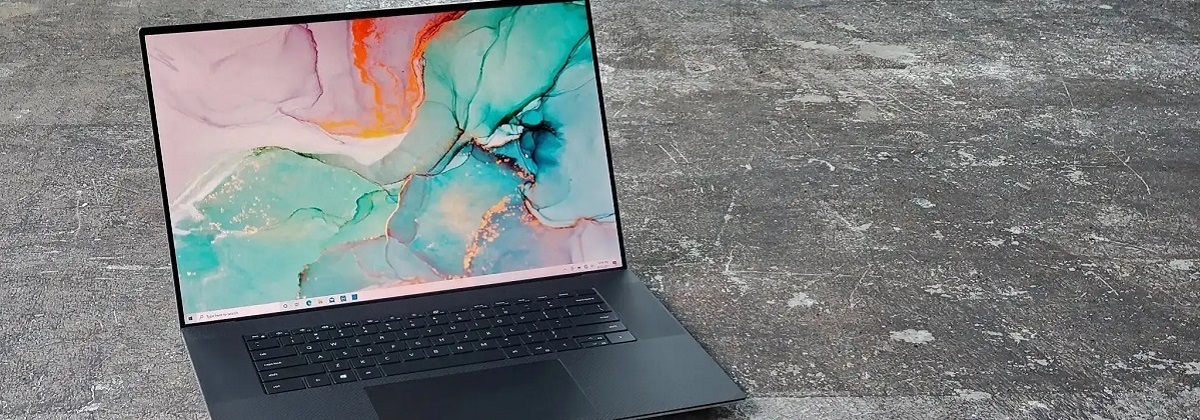Introduction
Upgrading the SSD (Solid State Drive) on your HP laptop can significantly improve its performance and storage capacity. An SSD is faster, more reliable, and quieter than a traditional hard drive, making it an ideal upgrade for any laptop user.
Whether you’re a professional who relies on your laptop for work or a casual user who wants a snappier experience, upgrading your SSD is a great way to breathe new life into your HP laptop.
In this guide, we’ll take you through the step-by-step process of upgrading the SSD on your HP laptop. From backing up your data to installing the new SSD, we’ll cover everything you need to know to successfully complete the upgrade.
Before we dive into the steps, it’s essential to note that upgrading the SSD may void your laptop’s warranty. If your laptop is still under warranty, consider contacting the manufacturer or an authorized service center to perform the upgrade. If your warranty has expired or you’re confident in your technical abilities, you can proceed with the upgrade.
By the end of this guide, you’ll have a faster and more efficient laptop with increased storage capacity, ready to handle your tasks with ease. So, let’s get started on upgrading your SSD!
Preparations
Prior to upgrading the SSD on your HP laptop, it’s crucial to make some preparations to ensure a smooth and hassle-free process. Taking the time to gather the necessary tools and backup your data will help you avoid any potential issues during the upgrade. Here’s what you need to do:
- Backup your data: Before making any changes, it’s essential to create a backup of your important files and documents. This will safeguard your data in case of any unforeseen circumstances or errors during the upgrade process. You can either use an external hard drive, online cloud storage, or a reliable backup software to store your data securely.
- Determine the type of SSD: HP laptops support different types of SSDs such as M.2, SATA, or PCIe. It’s crucial to know which type of SSD is compatible with your laptop model. You can find this information in your laptop’s user manual or by checking the specifications on the manufacturer’s website.
- Choose the right SSD: Once you know the type of SSD supported by your HP laptop, it’s time to select the right SSD for your needs. Consider factors such as storage capacity, speed, and price to find the best SSD that suits your requirements. It’s recommended to go for a reputable brand to ensure reliability and performance.
- Obtain the necessary tools: To successfully perform the SSD upgrade, you’ll need a few tools such as a screwdriver set and an anti-static wristband. These tools will help you safely open your laptop and handle the sensitive internal components. It’s important to have the right tools on hand to avoid causing any damage during the upgrade.
- Shut down and unplug your laptop: Before beginning the upgrade, make sure to power off your laptop completely and disconnect it from any power sources. This will prevent any accidental damage to your laptop or SSD during the installation process. Additionally, double-check that you’re working in a clean and well-lit area to minimize the risk of losing small screws or damaging components.
Once you’ve completed these preparations, you’re ready to start the process of upgrading the SSD on your HP laptop. With everything in place, you can proceed confidently, knowing that you’ve taken the necessary precautions to ensure a successful upgrade.
Step 1: Backup your data
Before you begin the process of upgrading the SSD on your HP laptop, it’s critical to create a backup of your data to ensure that you don’t lose any important files or documents. Follow these steps to back up your data:
- Identify your important files: Take some time to determine which files, folders, and documents are essential for you. This may include work-related files, personal photos, videos, music, or any other data that you don’t want to lose.
- Select a backup method: Choose the backup method that suits your needs. You can opt for one of the following methods:
- External hard drive: Connect an external hard drive or SSD to your laptop and transfer the necessary files to it. This provides a physical backup that you can keep separate from your laptop.
- Cloud storage: Use online cloud storage services such as Google Drive, Dropbox, or Microsoft OneDrive to upload and store your files securely in the cloud. This allows you to access your data from any device with an internet connection.
- Backup software: Utilize backup software like Acronis True Image or Macrium Reflect to create a system image or clone of your entire laptop. This method ensures that you have a complete backup of all your files, settings, and applications.
- Initiate the backup: Follow the instructions provided with the chosen backup method to initiate the backup process. Depending on the method, you may need to select the specific files and folders you want to back up, or you may have the option to create a complete system backup.
- Verify the backup: Once the backup process is complete, double-check that all your important files are successfully backed up. Open a few files or folders to ensure they can be accessed and are in their proper state.
- Keep the backup secure: Store your backup in a safe and secure location. If you’re using an external hard drive, keep it in a place where it won’t get damaged or stolen. In the case of cloud storage, ensure that you have strong passwords and enable two-factor authentication for added security.
By backing up your data before proceeding with the SSD upgrade, you can have peace of mind knowing that your important files are safe and can be restored effortlessly once the upgrade is complete.
Step 2: Determine the type of SSD
Before purchasing a new SSD for your HP laptop, it’s essential to determine the type of SSD that is compatible with your specific laptop model. Different HP laptops support different types of SSDs, including M.2, SATA, or PCIe. Following these steps will help you identify the correct SSD type:
- Check your laptop’s user manual: The first place to look for information about the supported SSD types is your laptop’s user manual. The manual usually contains detailed specifications and compatibility information for different hardware components, including the SSD.
- Visit the manufacturer’s website: If you don’t have access to the user manual, you can visit the official website of HP or the manufacturer of your specific laptop model. Look for the support or product page and search for the specifications of your laptop. This should include information about the supported SSD types.
- Use online resources: If you’re unable to find the necessary information from the user manual or the manufacturer’s website, you can turn to online resources. Numerous computer hardware forums, tech websites, and community-driven sites provide information and discussions about laptop compatibility and SSD upgrades. Participate in these forums or search for your specific laptop model to see what types of SSDs other users have successfully installed.
- Consult with professionals: If you’re still unsure about the type of SSD compatible with your laptop, consider consulting with professionals at a computer repair shop or contacting the manufacturer’s customer support. They can provide you with accurate information and guidance based on your specific laptop model.
Identifying the correct type of SSD for your HP laptop is crucial to ensure a successful upgrade. Once you have determined the compatible SSD type, you can proceed with confidence to the next step of purchasing the right SSD for your laptop.
Step 3: Choose the right SSD
Choosing the right SSD (Solid State Drive) for your HP laptop is an important step in the upgrade process. The right SSD will provide the performance, storage capacity, and reliability you need. Here are some factors to consider when selecting the right SSD:
- Storage Capacity: Determine the amount of storage space you require. SSDs come in a range of capacities, from 128GB to several terabytes. Consider your needs for storing files, applications, and media to select an SSD with adequate storage for your usage.
- Speed and Performance: SSDs vary in terms of read and write speeds. Faster SSDs will provide quicker boot times, faster data transfer, and improved overall performance. Look for SSDs with higher read and write speeds, especially if you require fast data access for tasks such as gaming, video editing, or intensive applications.
- Form Factor: Consider the form factor that is compatible with your laptop. The most common form factors for SSDs are M.2, 2.5-inch SATA, and PCIe. Ensure the SSD you choose matches the form factor supported by your HP laptop. If necessary, refer to the information obtained in the previous step to determine the compatible form factor.
- Reliability and Brand: Opt for SSDs from reputable brands known for their reliability and durability. Look for customer reviews and ratings to gauge the quality and performance of the SSDs you’re considering. Well-established brands like Samsung, Crucial, Western Digital, and Kingston are known for their reliable SSDs.
- Budget: Set a budget for your SSD upgrade and find the best SSD within that price range. Prices for SSDs can vary based on their capacity, speed, and brand. Consider the value and performance you are getting for the price and choose an SSD that fits within your budget.
By considering these factors, you can choose the right SSD that meets your specific requirements and enhances the overall performance of your HP laptop. Once you have selected the SSD, you are ready to move on to the next step of obtaining the necessary tools for the upgrade process.
Step 4: Obtain the necessary tools
Before you start the process of upgrading the SSD on your HP laptop, it’s crucial to gather the necessary tools to ensure a smooth and successful upgrade. Having the right tools will help you safely open your laptop and handle the internal components. Here are the essential tools you will need:
- Screwdriver set: A screwdriver set with various sizes and types of screw heads will be required to remove the screws that hold the laptop’s casing together. It’s important to have the right screwdriver size for the specific screws in your laptop model to avoid damaging them.
- Anti-static wristband: An anti-static wristband is a grounding device that protects your laptop’s internal components from static electricity. When working on your laptop, static electricity can damage sensitive circuits. This wristband will help discharge any static electricity built up in your body.
- Plastic spudger or a non-metallic pry tool: This tool is used to gently pry open the laptop’s casing without scratching or damaging it. It’s essential to use a plastic spudger or a non-metallic pry tool to avoid accidentally damaging any internal components.
- Cleaning cloth or compressed air canister: It’s a good practice to clean the inside of your laptop while you have it open. A lint-free cleaning cloth or a canister of compressed air can help remove dust, debris, and any loose particles from the internal components.
- Container for screws: When disassembling your laptop, it’s important to keep track of the screws you remove. Using a small container or a magnetic tray to store the screws will prevent them from getting lost or misplaced.
- Reference materials: Keeping the laptop’s user manual, any online guides or tutorials, and notes you take during the process can provide valuable references and ensure that you follow the correct steps for your specific laptop model.
By obtaining these necessary tools, you can perform the SSD upgrade on your HP laptop with ease and without causing any damage to your laptop’s internal components.
Step 5: Shut down and unplug your laptop
Before you begin the process of upgrading the SSD on your HP laptop, it’s important to shut down the laptop properly and ensure that it is disconnected from any power sources. Following these steps will help you avoid any potential risks and ensure a safe environment for the upgrade:
- Save your work and close all applications: Before shutting down, make sure to save any pending work and close all open applications. This will prevent any data loss or corruption during the upgrade process.
- Shut down your laptop: Click on the “Start” button in the bottom left corner of your screen and choose the “Shut Down” option from the menu. Wait for the laptop to completely shut down before proceeding to the next step.
- Unplug your laptop: Once the laptop is shut down, unplug the power adapter from the laptop and remove any other connected peripherals such as USB devices, external monitors, or Ethernet cables. This will ensure that your laptop is not connected to any external power sources.
- Ground yourself: To prevent static electricity from damaging the internal components, it’s important to ground yourself before proceeding. You can do this by touching a metal surface or wearing an anti-static wristband. This will discharge any static electricity from your body.
- Work in a clean and well-lit area: Find a clean and well-lit workspace where you can comfortably work on your laptop. Make sure the area is free of dust, dirt, and other potentially harmful particles that could enter your laptop during the upgrade.
By shutting down and properly disconnecting your laptop, you ensure that it is in a safe and stable state for the SSD upgrade process. With these precautions in place, you can proceed confidently to the next step of removing the existing SSD from your HP laptop.
Step 6: Remove the existing SSD
Now that you have shut down your HP laptop and disconnected it from any power sources, you can proceed to remove the existing SSD. Follow these steps carefully to avoid damaging any components:
- Locate the SSD compartment: Refer to your laptop’s user manual or manufacturer’s website to identify the location of the SSD compartment. In most cases, the compartment is located on the bottom of the laptop and secured by screws or clips.
- Remove the laptop’s casing: Using the appropriate screwdriver or pry tool, carefully remove the screws or clips that hold the laptop’s casing in place. Keep these screws in a safe place for reassembly later. Gently lift off the casing to expose the internal components.
- Identify the existing SSD: Locate the existing SSD within the laptop. It will be a small rectangular circuit board held in place by screws or slots. Take note of the connections and cables attached to the SSD to ensure that you disconnect them correctly.
- Disconnect the cables: Carefully disconnect any cables or connectors that are attached to the SSD. This may include SATA or power cables. Use gentle, even pressure to release the connectors, avoiding excessive force that could damage the connectors or the SSD itself.
- Remove the screws or brackets: If the existing SSD is secured by screws or brackets, use the appropriate screwdriver to remove them. Keep these screws or brackets in a safe place as you may need them when installing the new SSD.
- Remove the existing SSD: Once all cables and screws are disconnected, gently pull out the existing SSD from its slot or position. Take care not to touch any of the exposed circuitry to avoid damage from static electricity.
By following these steps and handling the existing SSD with care, you will successfully remove it from your HP laptop. With the existing SSD removed, you’re ready to proceed to the next step of installing the new SSD.
Step 7: Install the new SSD
With the existing SSD removed from your HP laptop, it’s time to install the new SSD. Follow these steps to ensure a proper and secure installation:
- Check the orientation: Ensure that you are holding the new SSD in the correct orientation. Align the slots or connectors on the SSD with the corresponding slots or connectors in the laptop’s SSD slot.
- Place the new SSD into the slot: Gently slide the new SSD into the designated slot, ensuring a snug fit. Be careful not to force the SSD or apply excessive pressure, as this could damage the connectors or the SSD itself.
- Secure the SSD with screws or brackets: If your laptop requires screws or brackets to secure the SSD, use the screws or brackets that you removed from the existing SSD in the previous step. Tighten them gently to secure the new SSD in place, ensuring it is not loose or unstable.
- Connect the cables: Reconnect the cables or connectors that you disconnected from the existing SSD. Ensure a secure and proper connection, aligning the connectors and applying gentle pressure until they snap into place.
- Replace the laptop’s casing: Carefully position the laptop’s casing back onto the laptop and align it with the screw holes. Reinsert the screws or engage the clips to secure the casing in place. Tighten the screws evenly, but avoid over-tightening to prevent damage to the casing or components.
By following these steps, you will successfully install the new SSD into your HP laptop. It’s important to handle the new SSD with care, ensuring proper alignment and secure connections to avoid any issues with functionality. With the new SSD installed, you’re now ready to move on to the next step of reassembling your laptop.
Step 8: Reassemble your laptop
After successfully installing the new SSD in your HP laptop, it’s time to reassemble the laptop to its original state. Follow these steps carefully to ensure everything is put back together properly:
- Align the laptop’s casing: Carefully position the laptop’s casing back onto the laptop, ensuring that all edges and corners align properly.
- Reinsert the screws or engage the clips: Use the screws or clips that you previously removed to secure the laptop’s casing. Insert the screws into their respective holes and tighten them evenly, but avoid over-tightening to prevent damage to the casing.
- Test the laptop: Before fully reassembling the laptop, it’s a good idea to perform a quick test. Reconnect the power adapter and any other necessary peripherals, then power on the laptop to ensure everything is functioning correctly. Check if the new SSD is detected and accessible.
- Finish reassembling: If everything is working as expected, proceed to fully reassemble the laptop by tightening all the screws and ensuring the casing is securely snapped into place. Double-check that all the screws are tightened evenly.
By following these steps, you will successfully reassemble your HP laptop after installing the new SSD. Take your time and be careful not to force any components or over-tighten screws. With the laptop fully reassembled, you can proceed to the next step of formatting and partitioning the new SSD.
Step 9: Format and partition the new SSD
After successfully reassembling your HP laptop with the new SSD, it’s time to format and partition the SSD. Formatting and partitioning prepare the SSD for use and allow you to organize and allocate storage space. Follow these steps to format and partition the new SSD:
- Access Disk Management: Open the Disk Management utility by right-clicking on the “Start” button and selecting “Disk Management” from the menu. Alternatively, you can search for “Disk Management” in the Windows search bar and select the matching result.
- Locate the new SSD: In the Disk Management window, locate the new SSD. It will be listed as a new, unallocated disk. Take note of its disk number and size, which will help you identify it during the formatting and partitioning process.
- Format the SSD: Right-click on the unallocated space of the SSD and select “New Simple Volume.” Follow the on-screen instructions to format the SSD. Choose the file system (NTFS is recommended for Windows), assign a drive letter, and specify the volume size according to your preferences. Leave the default settings for most options if you’re unsure.
- Create partitions (optional): If you wish to create multiple partitions on the new SSD, right-click on the newly created volume and select “Shrink Volume” to allocate space for additional partitions. Follow the on-screen instructions to specify the size of the new partition(s) and create them accordingly.
- Assign labels: Once the formatting and partitioning process is complete, right-click on each partition and select “Change Drive Letter and Paths.” Assign a drive letter to each partition and add a descriptive label if desired. This will make it easier to identify the partitions in the future.
By following these steps, you will successfully format and partition the new SSD on your HP laptop. This will prepare the SSD for use and allow you to organize your data effectively. With the formatting and partitioning complete, you can proceed to the final step of restoring your data onto the new SSD.
Step 10: Restore your data
After formatting and partitioning the new SSD on your HP laptop, it’s time to restore your data from the backup you created earlier. Follow these steps to successfully restore your data onto the new SSD:
- Connect your backup device: If you stored your data on an external hard drive or cloud storage, connect the backup device to your laptop.
- Access your backup: Locate your backup files on the external device or in the cloud storage. Copy the necessary files and folders to your new SSD. You can use the drag-and-drop method or the copy-paste function to transfer the files.
- Organize your data: Once the data is transferred to the new SSD, organize it according to your preferences. Create folders and subfolders to categorize your files, making it easier to navigate and locate specific documents or media.
- Verify the data transfer: After restoring your data, it’s crucial to double-check that everything transferred successfully. Open some files and folders to ensure they open correctly and that the data is intact.
- Install necessary applications: If you backed up any applications or software, you will need to reinstall them onto the new SSD. Use the installation files or download them from the official sources.
- Test your laptop: Once the data restoration is complete, restart your laptop and ensure that everything is functioning as expected. Test applications, access files, and verify that the new SSD is providing the desired performance improvements.
By following these steps, you will successfully restore your data onto the new SSD on your HP laptop. Take your time to ensure the data transfer is accurate and complete. With your data restored, your HP laptop is now ready to provide improved performance and increased storage capacity for your needs.
Conclusion
Congratulations! You have successfully upgraded the SSD on your HP laptop. By following the steps outlined in this guide, you have improved the performance and storage capacity of your laptop, providing a faster and more efficient computing experience.
The process of upgrading the SSD may seem daunting at first, but with careful preparation and attention to detail, you were able to complete each step successfully. By backing up your data, determining the type of SSD compatible with your laptop, choosing the right SSD, obtaining the necessary tools, and following the steps to remove the existing SSD and install the new one, you ensured a seamless upgrade process.
After reassembling your laptop, formatting and partitioning the new SSD, and restoring your data, you can now enjoy the benefits of improved performance, faster boot times, and increased storage capacity. Your HP laptop is now equipped to handle your daily tasks with ease, whether you’re a professional requiring productivity or a casual user seeking a smooth and snappy user experience.
Remember to store your backup securely and keep it up to date to ensure the safety of your important files and documents. Regularly monitor the health and performance of your new SSD to ensure it continues to operate optimally.
We hope this guide provided you with the necessary knowledge and confidence to successfully upgrade the SSD on your HP laptop. Enjoy your enhanced computing experience and make the most out of the improved performance and storage capacity of your upgraded system!

























